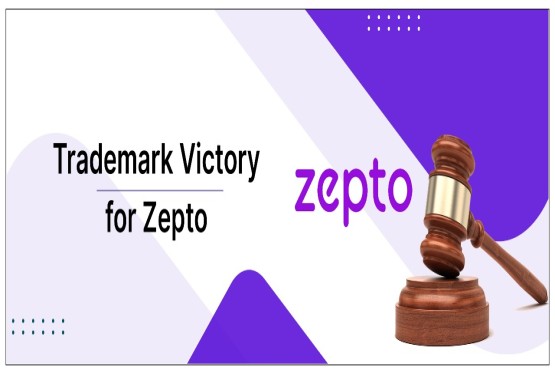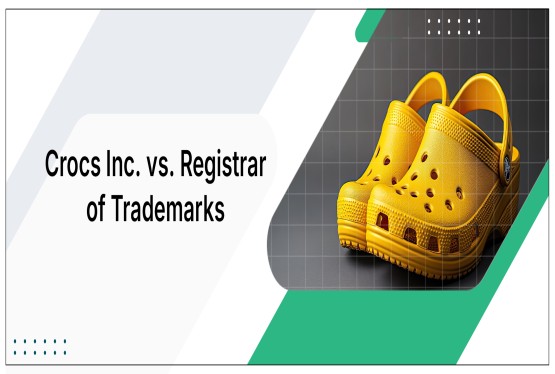Any individual or owner of a business in India that sells goods or services, whether domestically or overseas, is eligible to file for trademark registration. Under the Trade Marks Act, 1999 (henceforth referred to as the Act), individuals who own businesses, whether they be sole proprietorships or corporations, typically register for a trademark. Any sign or logo that a business or other entity owns and that features unique designs, paintings, or other signs that establish that firm's identification in the marketplace is considered a trade mark. Businesses, owners, and enterprises utilize trademarks to give their goods and services a unique and distinctive identity in the marketplace. For instance, MRF tires are well-known in the Indian market, and the company's emblem, which features a young, athletic man holding a tire above his head with both hands, helps people recognize it. When buying a tire, people typically check for the MRF trademark to determine whether or not the tire is made by MRF. In addition to helping with product sales and marketing, trademarks help a brand stand out from the competition.
This article discusses Section 11(1) of the Act, which prohibits new trademarks from being registered if they resemble any already-registered trademarks. However, let's first examine the idea of trademark registration before going on to Section 11.
Registration of Trademark: -
Once the proprietor has submitted the application, the Trade Mark Registrar will announce that the application has been accepted. Acceptance may be unconditional or subject to restrictions and changes. If there are conditions or adjustments, the Registrar will only accept the application once the owner has completed the necessary changes to both the application and the trademark. In accordance with Sections 9 and 11 of the Act, which address reasons for trademark refusal, the Registrar may also decline to accept the application. The Registrar will evaluate the application and the trade mark on all the grounds mentioned in both Section 9 and Section 11. An application for trade mark should pass the test of both Section 9 and Section 11 in order to be declared accepted by the Registrar.
Grounds for Refusal of a Trade Mark Under Section 11:-
Relative grounds for denial of trade mark registration are outlined in Section 11 of the Act. The grounds for refusal listed in this section are relative in character; that is, the new applied trademark will not be registered if it is entirely or partially similar to any pre-registered trademark. This clause safeguards the goodwill created by previous trademarks and stops new trademarks from profiting from the goodwill created by existing trademarks in the marketplace.
Judicial Precedents Surrounding Section 11(1) of Trade Marks Act, 1999
· Modicare Limited Vs. Registrar Of Trade Marks (2022)
The Registrar of the Trade Mark in this case refused to allow the plaintiff to register its trademark, "Saloon Professional," on the grounds that it would establish a link between the terms used for the trademark and the kind of goods and services it provides. Just by looking at the trademark, people will be able to recognize the goods and services that are sold under it. Additionally, because the mark is similar to an earlier registered mark and registering it would violate Section 11(1)(b) of the Act, the Registrar refused to register the mark.
Modicare, the plaintiff, filed an appeal with the High Court under Section 91(1) of the Act after being dissatisfied with the Registrar's order. In addition to its primary housemark, Modicare, the appellant contended that it has been using the trade mark "Saloon Professional" since 2003. The appellant submitted applications to register two trademarks: "saloon professional" and Modicare saloon professional. The Registrar objected to the mark "saloon professional," but the mark "modicare saloon professional" was registered. Both trademarks are used for class 3 items, which include shampoo, conditioner, hair oil, lotions, hair care products, hair creams, and hair color. The appellant's council contended that the terms "professional" and "saloon" are not interchangeable. The appellant's council contended that "professional" and "saloon" are
two distinct terms that, when combined, form a distinctive wordmark that is exclusive to the appellant.
Issue Raised: The question posed was whether the Deputy Registrar of Trade Marks had good reason to refuse registration of the "Saloon professional" trademark.
Judgement by the Court-The Delhi High Court ruled that although the appellant had applied for word mark registration, the appellant was using the word "saloon professional" as a logo. The word "saloon professional" would be prohibited from being used by other companies if it were registered under a word mark. The appellant consented to switch from the word mark to the device mark as the trade mark category. Additionally, the court ordered that advertisements link the trade mark "Modicare saloon professional" to "saloon professional." The appellant was granted permission by the court to register the trademark on these terms.
· Tata Sia Airlines Limited V.Union of India
A recent writ suit by Tata SIA Airlines Limited (the "Petitioner") asking the Delhi High Court to order the Ld. Registrar of Trade Marks (the "Registrar") to add the Petitioner's VISTARA mark to the list of well-known trademarks was denied.
In the case of TATA SIA Airlines Limited v. M/s. Pilot18 Aviation Book Store & Anr., CS(COMM) 156/2019, the Petitioner argued that the VISTARA mark was well-known. The Petitioner then wrote to the Ld. Registrar, requesting that the court take the ruling into consideration and add the VISTARA mark to the list of well-known trade marks. Additionally, the petitioner had asked the Ld. Registrar to waive the need to submit form TM-M and the appropriate costs as stipulated by Rule.
Ld. Registrar, however, declined to consider the petitioner's request in any way other than that which is allowed by Rule 124 of the TM Rules. As a result, the petitioner submitted this writ.
The Petitioner argued that Rule 124 of the TM Rules is superfluous if a court ruling declares a mark to be well-known. On the other hand, the Ld. Registrar argued that although it will not reevaluate whether a mark is well-known after the court has completed such an exercise, it is mandatory to submit a request in form TM-M and the required fees under Rule 124 of the TM Rules in order for a mark to be added to the list of well-known trade marks.
According to the court, a mark's designation as well-known by a court order does not provide it with the automatic right to be added to the Trade Marks Registry's list of well-known trademarks. The court further noted that since the relevant TM-M form's heading states "Request for inclusion of a trademark" rather than "Request for determination of a trademark," Rule 124 of the TM Rules was created to execute Section 11(8) of the Trade Marks Act, 1999. As a result, the court denied the writ petition and decided that, in accordance with Rules 124, the owner of such marks would still need to submit a request in form TM-M and the associated payment.
· Bennet, Coleman and Company Vs Fashion One Television Llc And Anr
On December 18, 2023, the Delhi High Court ruled that the anti-dissection rule does not completely prohibit the use of a composite mark's dominant elements in determining its likelihood of confusion because these elements garner the most attention and are most likely to be used by the public for identification purposes.
As the owner of the registered trademarks "TIMES NOW," "ET NOW," "MOVIES NOW," "ROMEDY NOW," and "MIRROR NOW" in Class 38 relating to television, telecommunications, and broadcasting services, the Petitioner, Bennet, Coleman and Company (henceforth referred to as the "Petitioner"), requested that the registered trademarks logo and logo in the names of Fashion One Television LLC and Anr., and Fashion One. The Court used a similar ruling from this Court in the Bennet, Coleman and Company Ltd. v. Vnow Technologies Pvt. Ltd. case to analyze whether the marks had the potential to confuse or deceive the public. In this instance, the mark Vnow's registration in class 38 irritated the petitioner, who is also the petitioner in this case. Previously, the court noted that proprietorial rights may arise from a registrant's family of marks when it is evident that the plaintiff has created a "family of marks" and that simply altering the mark's first word (i.e., its non-dominant feature) increases the likelihood of confusion in both trade and and in the thoughts of everybody who wants to buy the product. According to this Court, the "NOW"-centric "TIMES NOW," "ET NOW," "MOVIES NOW," "MIRROR NOW," and "ROMEDY NOW" marks are part of a "family of marks."
Accordingly, this Court noted that "NOW" would be the dominating element of the marks since consumers would undoubtedly recognize it as the unique characteristic shared by all "NOW-centric" marks. If a viewer with average intelligence and imperfect memory were to discover another channel offering comparable services with the title "NOW" in the latter part, they would probably consider the channel to be a part of the petitioner's repertoire or at the very least to be associated with the petitioner's NOW-family of channels. Applying the previously stated Bennet Coleman judgment's reasoning, mutatis mutandis, to the current case, the Court found that the contested logo and Respondents' logo are registered in the same services as the Petitioner's marks and are therefore inextricably linked to the Petitioner because of the Petitioner's continued interest in the "NOW" family of marks. Consequently, the Court determined that the Respondents' contested marks could not be permitted to remain on the Class 38 register. By upholding the Bennett Coleman ruling, the Court has firmly established that, when it comes to comparing conflicting markings, the prominent feature rule and the anti-dissection rule can coexist with the use of a comprehensive approach. As a result of this ruling, family mark owners can benefit from greater protection and exclusivity for their marks when contrasting their dominating elements with those of competing marks. There is a chance that this will elevate the prominent feature rule above the anti-dissection rule. In order to safeguard the public, trade members, and customers from any possibility of misunderstanding or deceit, it is crucial to find a balance between the two.
Conclusion-
Trade and business operations are growing as India's economy flourishes. An increasing number of trademark applications are being submitted for registration. As a result, the Act and its implementation are frequently utilized and mentioned. As more domestic and international companies expand their operations in India, stricter enforcement of trade
regulations and safeguarding individual companies' trading rights are essential for the present and the future. The legal sector is fundamentally focused on establishing legal frameworks that facilitate the expansion of contemporary enterprises and adjusting commerce norms to a more straightforward, easy-to-do commercial environment. In addition to being essential, the Trade Marks Act of 1999, the Copyright Act of 1957, the Sales of Goods Act of 1930, etc.

_crop6_thumb.jpg)




























_(b)_of_the_Trademark_Act,_1999_(1)_crop10_thumb.jpg)



_crop10_thumb.jpg)




























_crop10_thumb.jpg)
_crop10_thumb.jpg)






_crop10_thumb.jpg)








_crop10_thumb.jpg)



_crop10_thumb.jpg)





























_crop10_thumb.jpg)

















_crop10_thumb.jpg)






_crop10_thumb.jpg)
















































































































































































_crop10_thumb.jpg)












_crop10_thumb.jpg)































